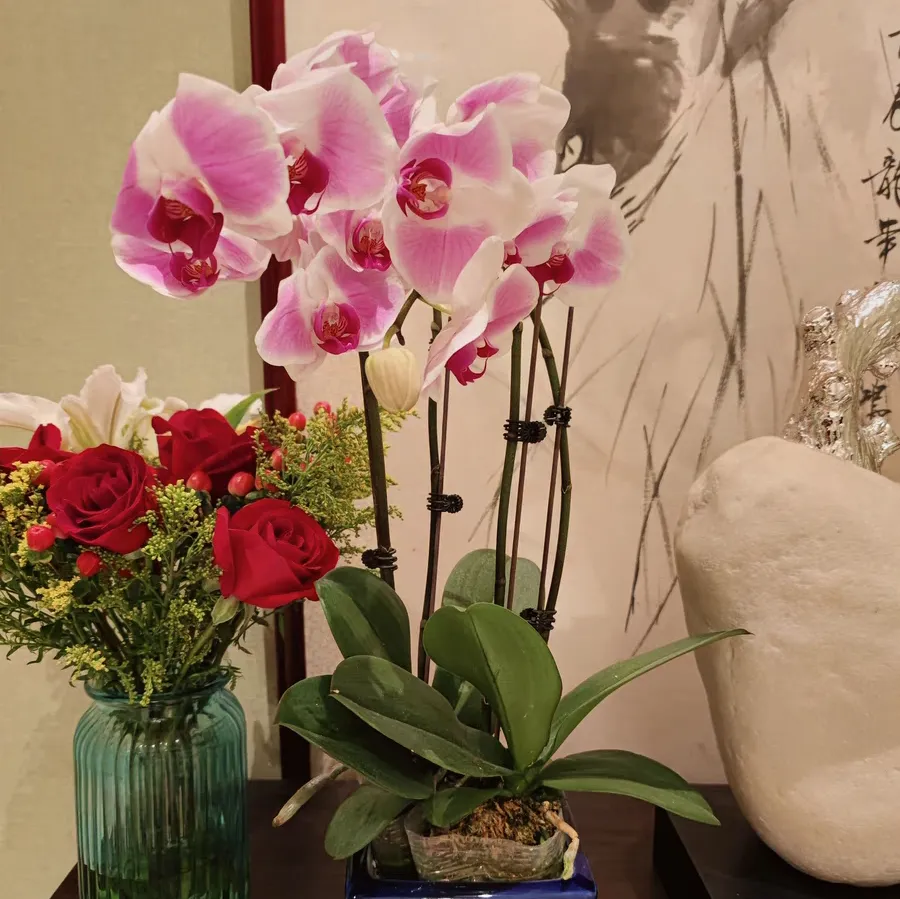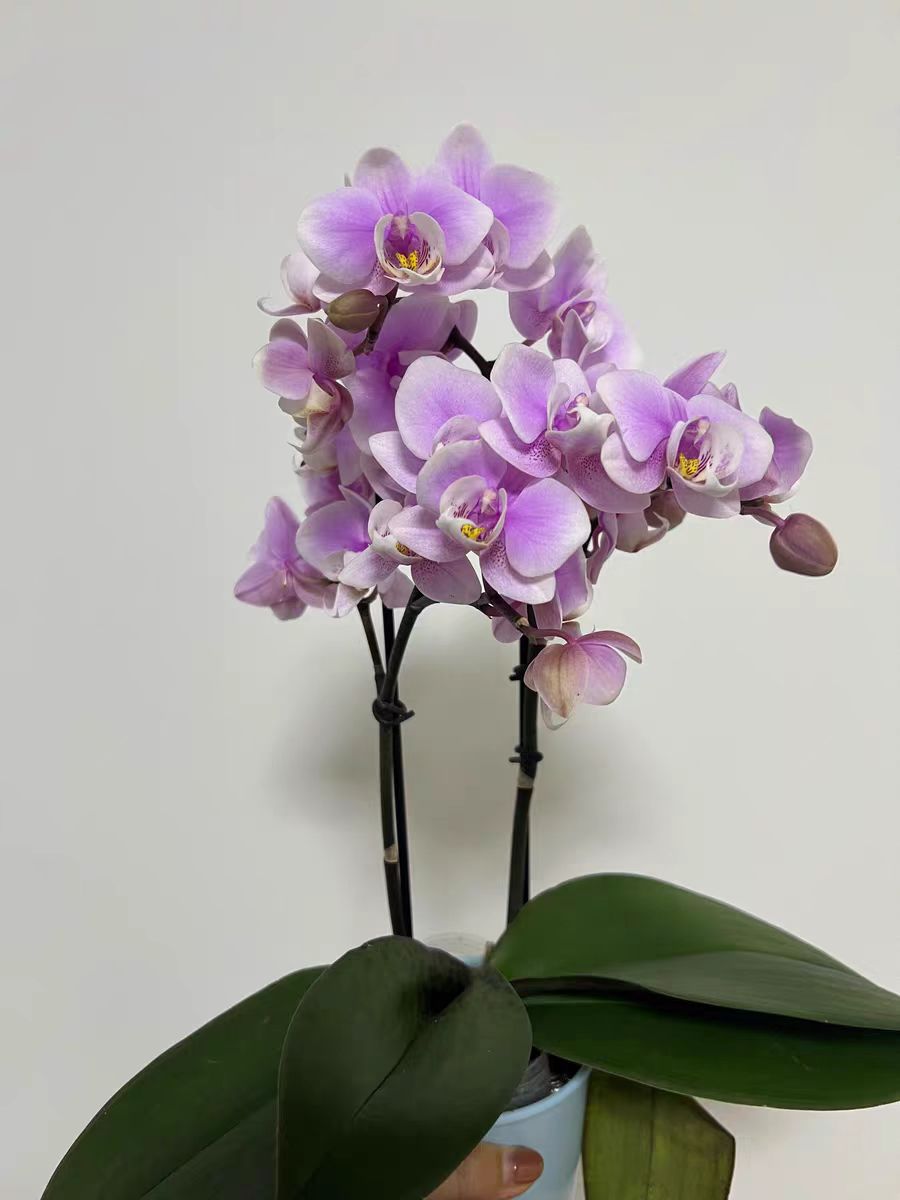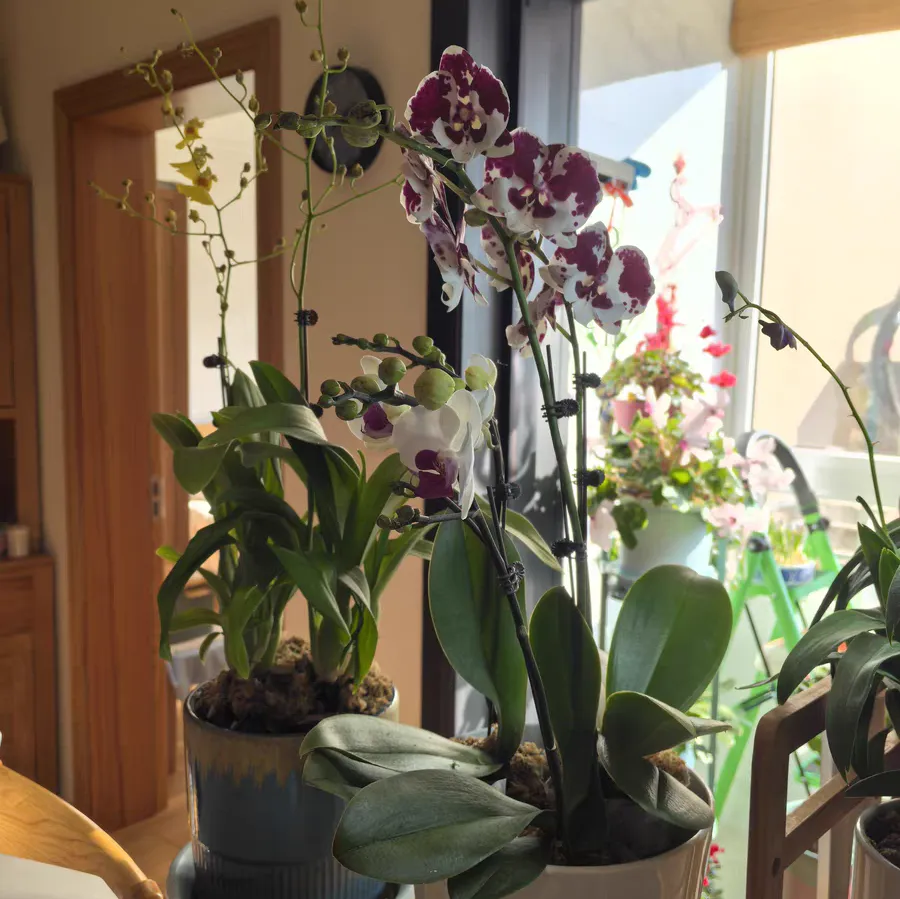As we all know, Phalaenopsis orchids are particularly beautiful when they bloom. However, it would be such a pity if, after it has finally produced a flower stalk, the subsequent maintenance fails to keep up! Don't worry. The following maintenance tips will surely help you take good care of the Phalaenopsis orchids and make them bloom big and beautiful flowers.
Light Management
After the Phalaenopsis orchid produces a flower stalk, it needs more sunlight exposure. You can place it in a well-lit area at home, such as near a window, allowing it to receive 6 to 8 hours of scattered light every day. But don't expose it directly to the sun, especially the strong midday sun, which is too intense and can easily sunburn the leaves of the Phalaenopsis orchid. In the morning or evening, it's sufficient to let it receive a little direct sunlight.
Temperature Control
Phalaenopsis orchids prefer a warm environment. After the flower stalk emerges, the most suitable temperature is to keep it at 25 to 28°C during the day and 18 to 20°C at night. If the temperature is too high, the flower stem will grow wildly, and the flowers are likely to wither prematurely. If the temperature is too low, the flower stem will grow very slowly and may even be frostbitten. In winter, be sure to keep it warm by using air conditioners, heaters, etc. If it's too hot in summer, turn on the air conditioner or use a fan to cool it down.
Watering Management
You need to master the proper amount of watering and adhere to the principle of "watering when the soil is dry and then thoroughly". After the Phalaenopsis orchid produces a flower stalk, its water demand increases, but don't water it excessively all at once. Waterlogging and root rot will cause big problems. Water it when the surface of the cultivation medium is dry, and water it thoroughly each time to ensure that the medium is fully hydrated, but there should be no water accumulation at the bottom of the pot. It's best to water in the morning so that the Phalaenopsis orchid has enough time to absorb the water, and there will be no water accumulation on the leaves at night, reducing the risk of diseases. In addition, keep the air humidity at 60% to 80%. If the air at home is too dry, you can spray some water on it with a spray bottle or place a basin of water nearby.
Fertilization Key Points
In order to make the Phalaenopsis orchid bloom big and beautiful flowers, fertilization should not be taken lightly. After the flower stalk emerges, reduce the use of nitrogen fertilizers. Otherwise, the leaves will grow too vigorously, and the flowers won't have the energy to bloom. Apply more phosphorus and potassium fertilizers. A diluted solution of potassium dihydrogen phosphate is a good choice. Use it once every 7 to 10 days, and you can spray it on the leaves or pour it into the soil according to the concentration specified in the instructions. However, once the flowers have bloomed, stop fertilizing, or the flowers will be prone to withering prematurely.
Other Maintenance Details
When the flower stem grows to 10 to 15 centimeters, it's best to find a thin bamboo stick or a special flower stand and gently tie the flower stem to it with a soft rope to prevent it from leaning or falling over. Usually, pay more attention and promptly remove any yellowed leaves, diseased leaves, and withered flowers. This way, the Phalaenopsis orchid will look clean and tidy and be less likely to get sick.
In short, if you follow these methods to cultivate the Phalaenopsis orchid, it will surely bloom beautifully. Give it a try now!
What to do after the Phalaenopsis orchids produce flower stalks?

Share with
Tagged in :




Leave a Reply